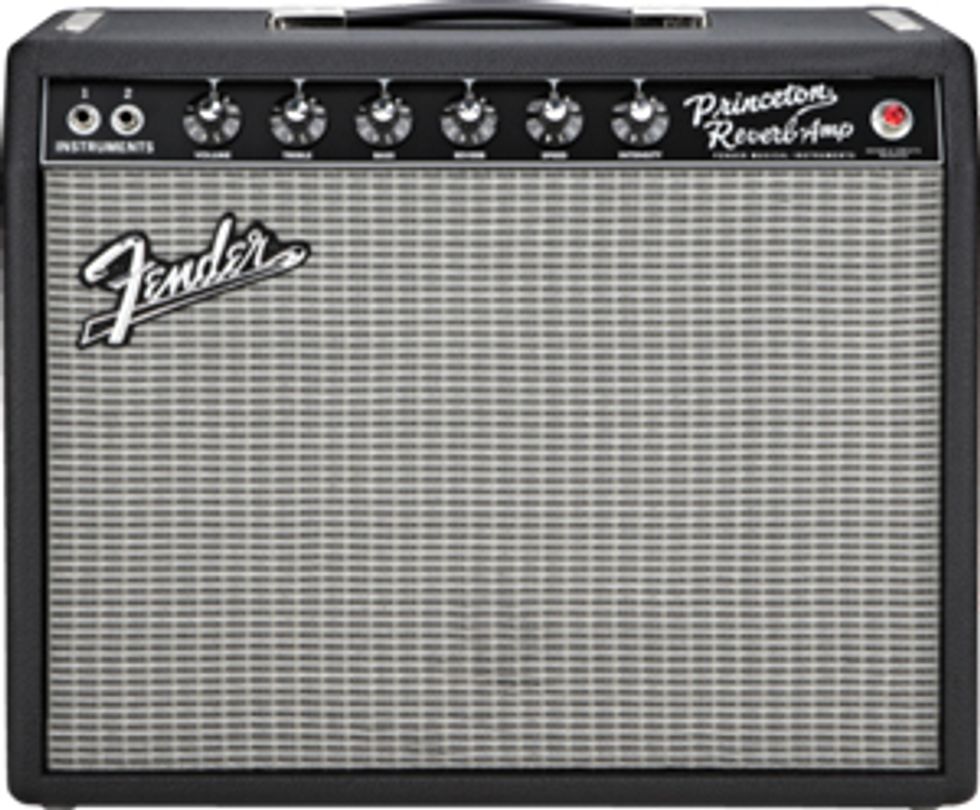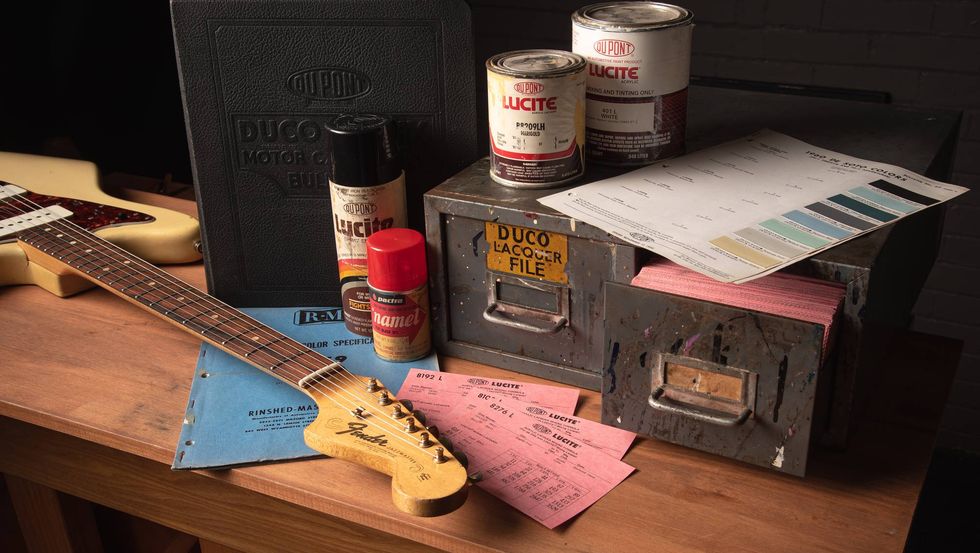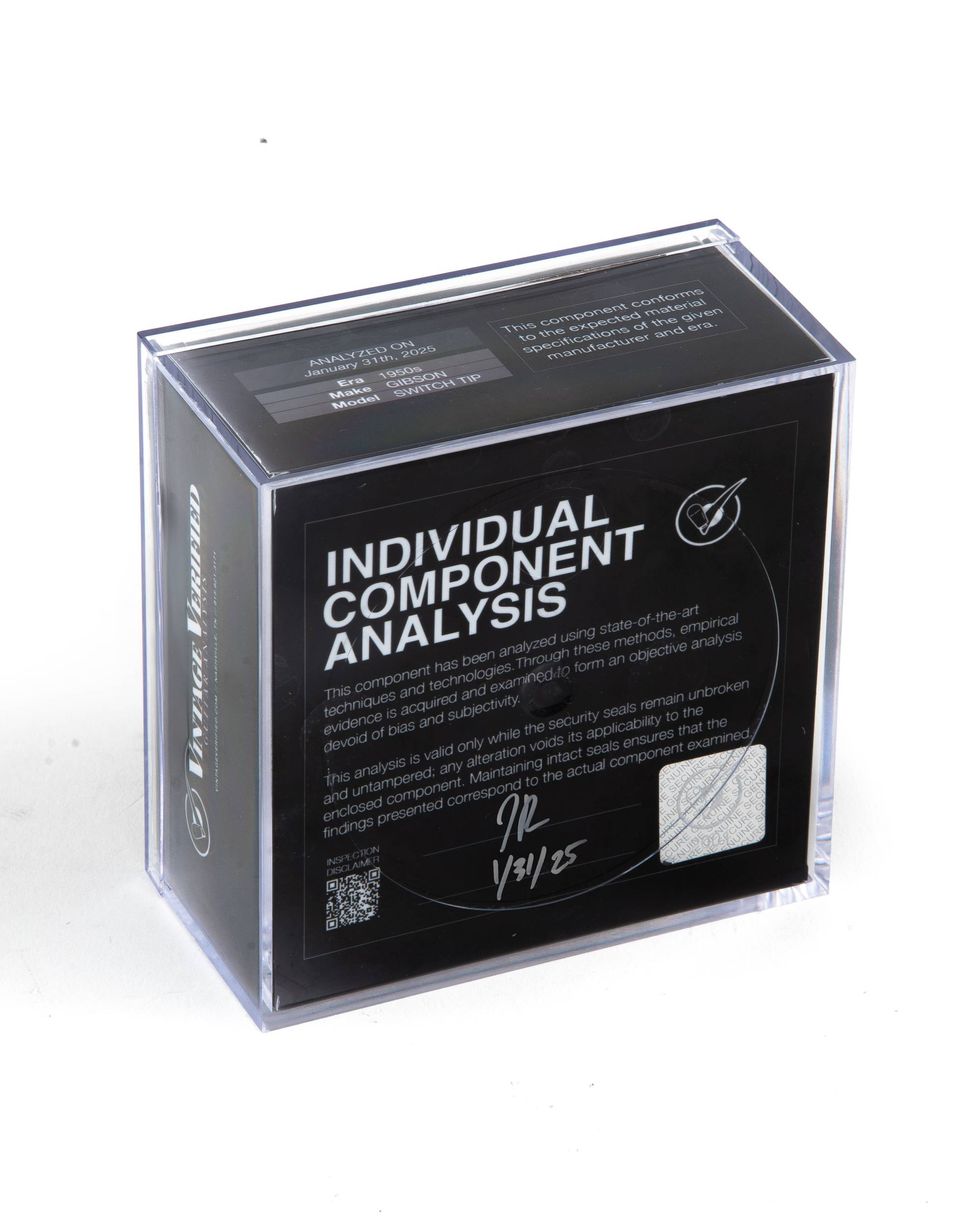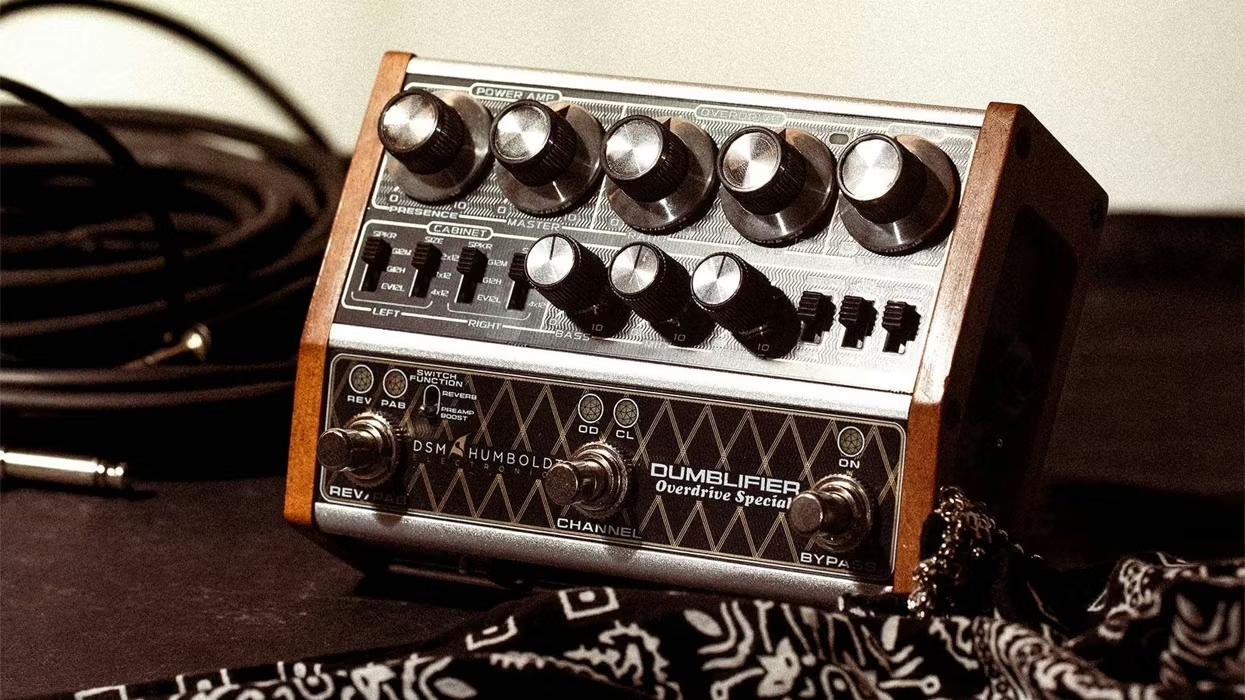
Fender’s reissue ’65 Princeton Reverb includes a 10” Jensen C-10R, a long-spring reverb tank, a pair of 6V6 power tubes, and a 5AR4 rectifier tube. Photo courtesy of Fender
Hi Jeff,
I have a reissue Fender Princeton
Reverb. I play clean and always use
the Princeton in conjunction with a
5-watt Laney Lionheart 1x12 combo.
I configure these amps in stereo with
modulation pedals between them.
To beef up the sound, I’m considering
buying an extension speaker cab
for the Princeton. Searching online,
I can’t find any recommendations for
an extension speaker to use with the
Princeton. The Princeton’s rear panel
says the amp should have an 8 Ω load,
which confuses me. Am I supposed
to disconnect the Princeton’s internal
speaker? What I really want to do is
add a 12" speaker and use it in conjunction
with the amp’s 10" speaker.
Is this possible? I appreciate any advice
you can offer.
Thanks,
Jimfre B.
Hi Jimfre,
I selected your question because it has
caused confusion for decades. I hear this all
the time: What’s the proper way to use the
extension speaker jack on the rear panel of
most vintage Fender combo amps? For me,
the short answer is, there is no proper use
of those extension speaker jacks.
Let me explain.
On all Fender combo amps and heads that have only two speaker output jacks (main and extension) and no other impedance setting controls or explanation of jack functions (such as series or parallel, as on some later Fender amps), the two jacks are simply wired in parallel.
Now, the multiple speaker jacks on most amps are typically wired in parallel, which is not a problem for an amp with impedance- selection capability, but this isn’t the case with these Fender amps. The output transformers on these types of Fender amps have only one set output impedance, and in the case of the combo amps, the output impedance is optimized for the amp’s internal speaker load.
For example, a Fender Deluxe Reverb combo has a single 8 Ω 12" speaker, so the output transformer is designed to have a dedicated 8 Ω output. A Fender Twin Reverb has two 8 Ω 12" speakers wired in parallel to create a 4 Ω load, and a transformer with a 4 Ω output. A Super Reverb has four 8 Ω 10" speakers wired in parallel to create a 2 Ω load. In each case, the transformer output is matched to the combo’s particular speaker load. This produces the highest available output power from the amplifier.
Once another speaker is added to the equation, the impedance now becomes mismatched and the power becomes reduced. So for example, if you were to add another 8 Ω extension cabinet to the already existing 8 Ω internal speaker, the output transformer would then be presented with a 4 Ω load and your 12 watts of available clean output power would be reduced by approximately 40 percent to 7.2 watts. Not the result you were hoping for, I’m sure.
In addition to that, the transformer becomes stressed because of the additional load placed on it. In some amps, this can absolutely lead to transformer failure, but fortunately the transformers in most vintage Fender amps seem to have been sufficiently overbuilt to stand up to this abuse for decades without fail. But now knowing this, I’m sure that you can see adding an extension speaker cabinet to your Princeton Reverb will achieve the exact opposite of what you’re looking for.
Yet I have a suggestion: Consider adding some additional external power. There are a couple of different ways you can accomplish this, but we’ll focus on approaches that hopefully let you retain the integrity of the Princeton sound.
You need two things: First, a line-level signal from your amplifier derived at the output stage so it retains the tonal characteristics of the amp, and second, an additional power amp to amplify this signal.
You can accomplish this in a couple of different ways. You could simply send the signal from the external speaker jack to any direct box capable of converting a speaker-level signal to a line-level signal. Unfortunately, most of the line-level outputs on these boxes are available only as an XLR connection, so you will also need an XLR-to-1/4" converter, so the signal winds up in a 1/4" format.
Another option would be to have the external speaker jack on your Princeton converted to a line-level output. This could easily be done by any competent amp tech in your area. I would strongly suggest adding a control so the output signal level is variable. This allows you to precisely adjust the signal level going to your external amp as required.
Now for the other half of the equation— power. Here you have many options, as well. One suggestion is to use a small, portable power amp, such as the Electro-Harmonix 44 Magnum. The size of an effects pedal, this box produces 44 watts of power that you could then use to drive your external speaker cabinet. This would certainly give you enough additional clean headroom and power for your application.
The other option would be to use another small combo amplifier with a line level input or effects loop return, possibly something like the ZT Lunchbox amp. This way you have power amp and speaker all in one.
There you have it! I hope this makes your Princeton Reverb big enough for any job. See you next time.
Warning: All tube amplifiers contain lethal voltages. The most dangerous voltages are stored in electrolytic capacitors, even after the amp has been unplugged from the wall. Before you touch anything inside the amp chassis, it’s imperative that these capacitors are discharged. If you are unsure of this procedure, consult your local amp tech.
 Jeff Bober is one of
the godfathers of the
low-wattage amp revolution,
co-founded and was
the principal designer for
Budda Amplification. Jeff recently launched EAST
Amplification, and he can be reached at
pgampman@gmail.com.
Jeff Bober is one of
the godfathers of the
low-wattage amp revolution,
co-founded and was
the principal designer for
Budda Amplification. Jeff recently launched EAST
Amplification, and he can be reached at
pgampman@gmail.com.




















